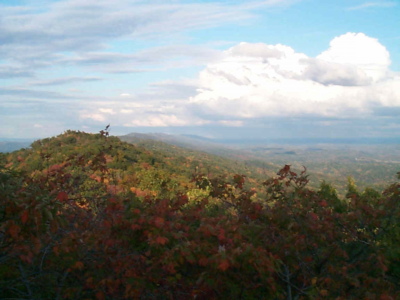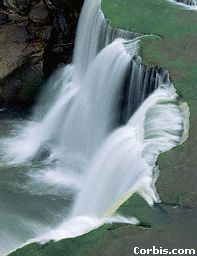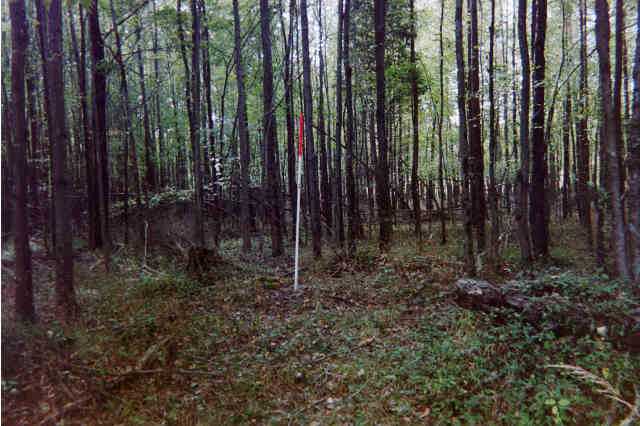- Welcome to the
Principal Investigator Dr. Elisa Marie D'Angelo
Contents
Principal Investigator Dr. Elisa Marie D'Angelo
Contents
 Research
Research  Current Projects
Current Projects Join the Team
Join the Team Facilities
Facilities Teaching
Teaching Biographical Information of Elisa D'Angelo (Principal Investigator)
Biographical Information of Elisa D'Angelo (Principal Investigator) Key Personnel
Key Personnel Refereed Publications
Refereed Publications Related Links
Related Links Contact Information
Contact Information 



(Photograph of a typical bottomland hardwood forest wetland that dominated much of KY prior to the 1800's. At the state and federal levels, there is interest in preserving and recreating these systems to recover lost wetland functions, such as water quality improvement, habitat, and recreation. The SWBL at UK is investigating how well the replacement, or mitigated wetlands, are performing biogeochemical C, N, and P cycling processes compared to "pristine" bottomland hardwood forest wetlands. This information is necessary to properly identify suitable sites, and monitor, and manage mitigated wetlands so that the "No Net Loss" wetland goal can be achieved. Exciting new results!!!)

 Aerobic and anaerobic microbial ecology and diversity in the soil-water-rhizosphere environment
Aerobic and anaerobic microbial ecology and diversity in the soil-water-rhizosphere environment
 Microbial transformations of organic and inorganic pollutants
Microbial transformations of organic and inorganic pollutants
 Regulators of microbial processes
Regulators of microbial processes
 Bioavailability of pollutants and environmental fate
Bioavailability of pollutants and environmental fate
 Biogeochemical processes affecting water quality in lakes and constructed/natural wetlands
Biogeochemical processes affecting water quality in lakes and constructed/natural wetlands
 Soil bioremediation
Soil bioremediation
Research Justification
internet casino slotsExpanding agricultural and industrial production have significantly improved the socioeconomic status of many Kentuckians. Associated with some of these activities, however, are impeded soil and water quality that impact the health and quality of life for many citizens and the environment. The essence of Biogeochemistry is to gain an understanding of biological and chemical processes that govern the fate of contaminants in the environment, and to use this knowledge to develop solutions to environmental problems.
A critical issue facing Kentuckians is how to remediate soils and sediments contaminated with agricultural and industrial toxic organic compounds. For example, pollution of soils and sediments with toxic polychlorinated biphenyls (PCBs) from improper industrial waste disposal has resulted in several recent fish consumption advisories in Kentucky and surrounding states. On a statewide and national basis, PCBs are one of twenty top hazardous substances, and we still do not know the extent of contamination largely because of high sampling and analytical costs. In collaboration with the Department of Chemistry at the University of Kentucky, we are developing biosensors using genetically engineered microorganisms that sensitively detect low levels of PCBs and their degradation intermediates in soil and water samples (Abstract). With this technology, we can rapidly survey large numbers of samples and notify the public of potential health risks.
Once toxic contaminants are detected, we can take steps to remediate these systems. For example, we now know that if natural microbial populations are provided appropriate growing conditions, they will detoxify the pollutants by degrading them or binding them with soil organic matter. Once relationships between environmental conditions and detoxification processes are understood, it will be possible to manipulate them to enhance removal of toxic chemicals in these environments.
Another concern facing Kentuckians is the widespread contamination of rivers, streams, and lakes with phosphorus and bacteria originating from domestic waste and surface runoff from manure applied land. These pollutants cause surface waters to be unfit for drinking, swimming, boating and fishing, thereby reducing the quality of life for Kentuckians as well as for visitors to the Commonwealth (1998 Water Quality Report to Congress). Fortunately, some soils and other solid materials have high capacities to sorb these pollutants, thereby reducing chances of pollution to sensitive water bodies. We are taking advantage of this process by evaluating the trapping efficiency of several soils and other sorbents, and choosing the most suitable ones to construct combined grass filter strip-sorbent systems to trap pollutants in the landscape.
Flirting Body Language : Tips to Perfect Flirting | Accounting outsourcing can shed your workload | Advanced Blackjack StrategyAbout 90% of Kentucky's wetlands have been lost since settlement in the 1700's. With these losses, we have lost several important wetland functions including wildlife habitat, water purification, and flood control. In accordance with the goal of "No Net Loss" of wetlands by the US administration, we are assigned the task of saving remaining wetlands and constructing replacement wetlands that fulfill these functions. In Kentucky, new wetland impacts are required to be mitigated at a minimum ratio of two acres restored for each one acre lost. One question facing Kentuckians is, "How do we know whether constructed/restored wetlands are adequately performing the functions of original, undisturbed wetlands?" We are in the process of evaluating water purification processes and microbial diversity in disturbed and undisturbed wetlands to determine whether easily measurable indicators can be used to assess the success of wetland restoration.
My research focuses on the biological and chemical fate pathways of toxic organic chemicals (chlorinated aromatic compounds) and other contaminants (phosphorus) in soils, water and wetlands. Several projects are in progress that address these issues: development of genetically-engineered microbial detection systems for chlorinated aromatics in soils and water, evaluate the microbial ecology and degradation/humification of chlorinated aromatics in wetland and upland soils, determine the capacity of Kentucky soils and other sorbents to sequester animal manure-derived phosphorus and bacteria in the landscape, and evaluate the use of biogeochemical indicators as tools to assess the health of natural and constructed/restored wetlands.

Current Projects (2000-2005; listed in order of funding date)
This project is a collaborative effort between researchers in the Departments of Chemistry, Agronomy, and Biochemistry. We are developing new sensing systems for a toxic group of substances known as polychlorinated biphenyls and their breakdown products in environmental samples, including water, soils, and biological tissues. Methods consist of developing efficient PCB extraction procedures from different matrices and detection using genetically engineered biosensing systems (Abstract).
2. Enhanced mineralization of chlorinated pesticides at aerobic-anaerobic, plant-soil-water interfaces (Funding RCG; Investigators D'Angelo and Meade)
Highly chlorinated organic compounds are only partially degraded under either anaerobic or aerobic conditions, generating several toxic by products. This project investigates whether sequential anaerobic and aerobic microbial processes in the plant rhizosphere and soil-water interface will enhance the degradation of chlorinated organic chemicals in flooded soils. Results will be valuable for the design of treatment systems for soils contaminated with this class of compounds.
3. Microbial population dynamics during PCB bioremediation in soils (Funding NSF-Career Grant; Investigator D'Angelo and Wensui)
Polychlorinated Biphenyls (PCBs) are among the most common and toxic substances at Superfund sites, and contamination has resulted in several fish consumption advisories in Kentucky rivers and streams. This study investigates ways to promote biodegradation and binding-attachment of PCBs to soil organic matter through stimulation of key microbial communities, so that contaminants no longer pose a threat to humans or the environment.
4. Linkages between microbial diversity and processes along nutrient gradients in wetlands (Funding NSF; Investigators: Ogram, Reddy, D'Angelo)
free internet casinoOver 50% of US wetlands have been lost or impacted by urban and agricultural activities, hence there is interest in protecting and restoring these ecosystems. This study investigates whether genomic diversity and metabolic processes of aerobic and anaerobic bacteria are sensitive bioindicators of ecosystem impact and recovery.
We are testing the ability of different sorbents to sequester important domestic waste and agricultural contaminants phosphorus and bacteria from water. Suitable sorbents are to be installed in agronomic settings as part of integrated grass filter strip-permeable reactive barrier systems with the goal of preventing water pollution from runoff and leaching from fertilizer and manure-amended soils.
6. Phosphorus behavior in soils and potential impacts on water quality (Funding SB 271; Investigators: D'Angelo, Vandiviere, Thom, and Sikora)
In this study, we are (1) developing sorption-desorption isotherms for P in a spectrum of Kentucky soils, (2) describing P sorption behavior using a variety of models (3) establishing relationships between easily measurable soil properties and sorption behavior, (4) validating these relationships on new sets of KY soils, and (5) elucidating the fate and distribution of P in fertilizer and manure-amended soils. Results of these studies will ultimately be used during the development of "Best Management Practices" and regulations for P in KY (Research Brief and Abstract).
In this project, we are investigating nutrient cycling processes, biogeochemical indicators, and the HGM system in a series of laboratory and in situ studies with soil and litter obtained from low-gradient, riverine wetlands, with the goal of linking actual wetland processes to biogeochemical indicators and HGM variables. Results will ultimately be useful by providing diagnostic tools to assess the water quality improvement function of created and restored wetland ecosystems. The study will also generate data required for development of N and P nutrient quality standards for wetlands as required by EPA in the year 2003.
![]()

Opportunities exist at the Soil & Water Biogeochemistry Laboratory for motivated students interested in pursuing careers in environmental chemistry. Assistantships and health benefits are available for many of these positions depending on qualifications (GPA, TOEFL and GRE scores). Please contact Elisa D'Angelo or the University of Kentucky Graduate School for application information.
 One Ph.D. level program with experience in molecular biology techniques
One Ph.D. level program with experience in molecular biology techniques
The Soil & Water Biogeochemistry and Environmental Microbial Genomics and Ecology Laboratories in the Department of Agronomy at the University of Kentucky are well equipped to conduct the studies described above, including the following equipment and instrumentation:
 Soil and Water Biogeochemistry Lab:
Soil and Water Biogeochemistry Lab:
 Fully equipped Environmental Microbial Genomics and Ecology Laboratory:
Fully equipped Environmental Microbial Genomics and Ecology Laboratory:

Biogeochemistry (PLS/NRC 450G)
Course Description
This three credit hour lecture course focuses on quantitative descriptions of the chemical, physical and biological processes that determine the behavior of chemicals in the environment. Emphasis will be placed on soil processes, and their influence on soil, air, and water quality. The practical objectives of the course will be predictions of chemical fate and recommendations of management practices to ameliorate pollutants in the environment.
Course Objectives
1. Provide overview of basic chemical and physical properties of soil, water, and atmosphere, and classification of pollutants.
2. Explain the dominant transformations, partitioning, and transport processes governing the fate of pollutants and significance on environmental quality.
3. Describe strategies to remediate environmental pollutants in the soil-water environment.

Biographical Information of Elisa D'Angelo (Principal Investigator)
Education
1998 Ph.D. University of Florida, Wetland Biogeochemistry Laboratory, Soil and Water Science Department, minor Environmental Engineering Science
1985 B.S. University of Central Florida, Limnology, minor Chemistry, Department of Arts and Sciences
Professional Experience
1999-pres Assistant Professor, University of Kentucky, Agronomy Department
1995-1998 Graduate Research Assistant, University of Florida
1986-1999 Senior Biological Scientist, University of Florida
Awards
1999 Excellence for Graduate Research, Institute of Food and Agricultural Sciences, University of Florida
1998 Excellence in Graduate Research, Soil and Water Science, University of Florida
1996 Sam Polston Outstanding Graduate Student Scholarship, University of Florida
1995 National Research Initiative Competitive Grants Award, USDA
1980 Gymnastics Scholarship, Jacksonville State University, AL

Dhritiman Ghosh (Post doctoral fellow)
Terry Meade (M.S., now at USDA National Soil Tilth Lab, IA)
Martin Vandiviere (Senior research technician and M.S. student)
Stephanie Wehr (M.S., now at US EPA, OH)
Luo Wensui (Ph.D candidate)
Shifen Xu (Post doctoral fellow)

E.M. D'Angelo and K.R. Reddy. 2003. Influence of aerobic and anaerobic conditions on chlorophenol sorption in wetland soils. (in press, Soil Science Society of America Journal).
E.M. D'Angelo, M.Vandiviere, W.O. Thom, and F. Sikora. 2003. Estimating soil phosphorus requirements and limits from oxalate extract data. (in press, Journal of Environmental Quality)
X.Guan, E.M. D'Angelo, L. Wensui, and S. Daunert. 2002. Biosensor detection of 3 chlorocatechol in liquids and soils. Anal Bioanal Chem. (2002) 374: 841-847.
E.M. D'Angelo. 2002. Wetlands: Biodegradation of organic pollutants. In: Encyclopedia of Environmental Microbiology (G. Bitton, ed). John Wiley and Sons, NY.
E.M. D'Angelo, J. Crutchfield and M.Vandiviere. 2001. Rapid, sensitive, microscale determination of phosphate in water and soil. J. Environ. Qual. 30:2206-2209.
E.M. D'Angelo and K.R. Reddy. 2000. Aerobic and anaerobic transformations of pentachlorophenol in wetland soils. Soil Science Society of America Journal 64:933-943.
K.R. Reddy, E.M. D'Angelo, and W.G. Harris. 2000. Biogeochemistry of wetlands. In: Handbook of Soil Science (M.E. Sumner, ed). pp G89-G119. CRC Press, Boca Raton, FL.
E.M. D'Angelo and K.R. Reddy. 1999. Regulators of heterotrophic microbial potentials in wetland soils. Soil Biology and Biochemistry 31:815-830.
K.R. Reddy and E.M. D'Angelo. 1996. Biogeochemical indicators to evaluate pollutant removal efficiency in constructed wetlands. Water Sci. Technol. 35:1-10.
E.M. D'Angelo and K.R. Reddy. 1994a. Diagenesis of organic matter in a wetland receiving hypereutrophic lake water: I. Distribution of dissolved nutrients in the soil and water column. J. Environ. Qual. 5:928-936.
E.M. D'Angelo and K.R. Reddy. 1994b. Diagenesis of organic matter in a wetland receiving hypereutrophic lake water: II. Role of inorganic electron acceptors in nutrient release. J. Environ. Qual. 5:937-943.
K.R. Reddy and E.M. D'Angelo. 1994. Soil Processes Regulating Water Quality in Wetlands. pp 309-324. In: J.W. Mitsch (ed) Global Wetlands: Old World and New. Elsevier, NY.
E.M. D'Angelo and K.R. Reddy. 1993. Ammonium oxidation and nitrate reduction in hypereutrophic lake sediment. Soil Science Society of America Journal 57:1156-1163.
K.R.Reddy, M. Agami, E.M. D'Angelo, and J.C. Tucker. 1991. Influence of potassium supply on growth and nutrient storage by water hyacinth. Bioresource Technology 37:79-84.
K.R. Reddy, E.M. D'Angelo, and T.A. Debusk. 1990. Oxygen transport through aquatic macrophytes: Its role in wastewater treatment. J. Environ. Qual.19:261-267.
K.R. Reddy, E.M. D'Angelo, C. Lindau, and W.H. Patrick, Jr. 1990. Urea losses in flooded soils with established oxidized and reduced soil layers. Biology and Fertility of Soils 9:283-287.
K.R. Reddy and E.M. D'Angelo. 1990. Biomass yield and nutrient removal by water hyacinth (Eichhornia crassipes) as influenced by harvesting frequency. Biomass 21:27-42.
E.M. D'Angelo and K.R. Reddy. 1987. Effect of three growth regulators on growth and nutrient uptake of Eichhornia crassipes [Mart Solms]. p. 561-568. In: K.R. Reddy and W.H. Smith (eds) Aquatic Plants for Water Treatment and Resource Recovery. Magnolia Publ. Inc., Orlando, FL.

State
 University of Kentucky Libraries
University of Kentucky Libraries
 Kentucky Water Resources Institute
Kentucky Water Resources Institute
 Kentucky Department of Environmental Protection
Kentucky Department of Environmental Protection
 The Nature Conservancy Kentucky Chapter
The Nature Conservancy Kentucky Chapter
 Kentucky Water Quality and Criteria
Kentucky Water Quality and Criteria
 Kentucky Fish Consumption Advisory
Kentucky Fish Consumption Advisory
 Environmental and Natural Resource Issues Task Force (ENRI)
Environmental and Natural Resource Issues Task Force (ENRI)
 Superfund Basic Research Program at the University of Kentucky
Superfund Basic Research Program at the University of Kentucky
National
Societies
 American Society for Microbiology
American Society for Microbiology
 Soil Science Society of America
Soil Science Society of America
 Soil Science Society of America-Glossary of Soil Science Terms
Soil Science Society of America-Glossary of Soil Science Terms
 Soil Science Society of America: Wetland Soils
Soil Science Society of America: Wetland Soils
 National Society of Wetland Scientists
National Society of Wetland Scientists
USDA
 United States Department of Agriculture
United States Department of Agriculture
 USDA/NRCS Wetland Science Institute
USDA/NRCS Wetland Science Institute
USGS
 USGS Water Resources of the United States
USGS Water Resources of the United States
USEPA
 ATSDR/EPA Top 20 Hazardous Substances
ATSDR/EPA Top 20 Hazardous Substances
 USEPA-Quality of Our Nations Waters
USEPA-Quality of Our Nations Waters
USFW
 US Fish and Wildlife Service Wetlands Inventory
US Fish and Wildlife Service Wetlands Inventory
 US Army Corps of Engineers ACE1987 Wetland Delineation Manual
US Army Corps of Engineers ACE1987 Wetland Delineation Manual
![]()

Latest update on April 22, 2003